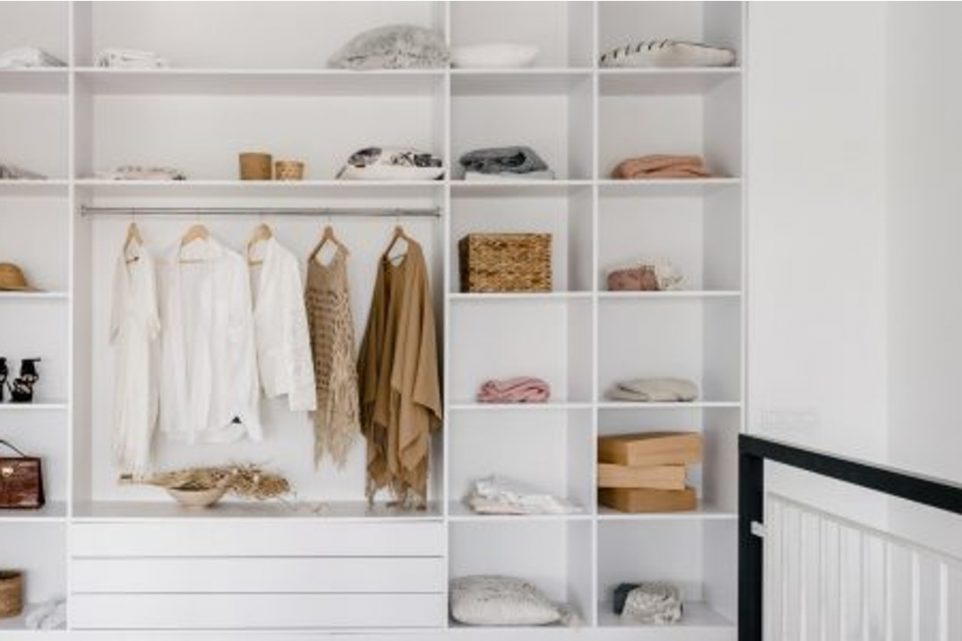4 Hacks for Organizing a Small Closet to Help You Find Things Faster

Transforming a cramped closet into a functional, stylish space has become something of a personal quest for me. After years of battling with a tiny closet that seemed to shrink with every shopping trip, I’ve finally mastered the art of maximizing every inch. Let me walk you through the space-saving hacks and clever storage solutions that have revolutionized my wardrobe management. These aren’t just quick fixes; they’re sustainable strategies to keep your closet organized and accessible.
1. Assess Your Space
First up, understand what you’re working with. I scrutinize every nook, cranny, and quirky corner of my closet. Check if you have underutilized areas—perhaps above the door or in the far corners. For irregular spaces like sloped ceilings or alcoves, custom solutions like curved rods or angled shelves can turn wasted space into valuable storage. I added hooks on the inside of the closet doors to hang scarves and belts, which utilized the often-forgotten door space effectively.
2. Go Vertical
Vertical storage is your best friend in a small closet. I installed extra shelves up to the ceiling, which meant I could store less frequently used items up high. Painting these shelves a vibrant color not only made them a decorative feature but also helped visually expand the space. Adding a second hanging rod below shirts for pants and skirts can double your hanging space and streamline your setup.
3. Use Every Inch of Depth
One of the biggest game-changers for me was installing pull-out shelves. These allow you to access the depths of your closet without having to dig through layers of clothing. For deep closets, back-of-closet rods for out-of-season or special occasion outfits can be a lifesaver, keeping them out of the way but still in good condition.
4. Smart Footprint Maximization
I recommend tension rods for creating adjustable shelving. These are perfect for slotting in shoes or bags and can be repositioned as your collection changes. Drawer organizers with adjustable dividers have transformed my drawers from chaos to curated collections of accessories and small clothing items.
5. Door and Wall Utilization
Over-the-door organizers aren’t just for shoes. I use one for storing everything from beauty products to small purses. If door space is limited, consider wall-mounted hooks or a pegboard for hanging items externally. This can be particularly handy for planning outfits or hanging freshly ironed clothes.
6. Underutilized Accessories
Consider specialty hangers like cascading hooks or multi-layer hangers for pants and skirts. These can significantly increase hanging space and keep items neatly organized. Similarly, slimline hangers are great as they take up less rod space.
7. Seasonal Swap Strategies
For those of us dealing with seasonal clothing shifts, under-bed storage bags are a must. Rotate out-of-season garments out of prime closet real estate to maintain an uncluttered environment. I also use vacuum-seal bags for bulky items like winter coats and sweaters.
8. The Folding Technique
Adopting the KonMari method of folding has not only kept my drawers meticulously organized but also made it easier to see and access everything I own. This method involves folding clothes into compact rectangles that stand upright, maximizing drawer and shelf space.
9. Light It Up
Good lighting can be transformative. Installing inexpensive, battery-operated LED lights has made it easier to see and access the depths of the closet. Plus, it adds a boutique feel that makes choosing outfits a pleasure.
10. Make It Personal
Finally, add personal touches. A small rug or decorative wallpaper at the back of the closet can turn it from a purely functional space into a delightful part of your daily dressing ritual. A mirror installed on the inside of the door not only saves space but also adds functionality.
Decades of Combined Expertise
Best Buy Guidebook is a culmination of online publishing lessons learned. From SEO to paid ads, our team has experienced the highest of highs and the lowest of lows. Our goal now is simple: Arm readers with the most information possible.
